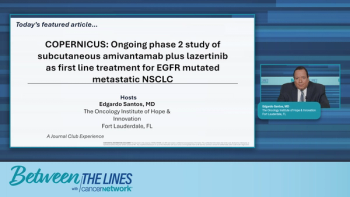
Postsurgical Assessment and Early Management Considerations for IDH-Mutant Gliomas
Panelists discuss how they evaluate patients postsurgically by weighing factors like tumor location, extent of resection, patient age, and quality of life considerations to determine whether to pursue immediate treatment or surveillance, while emphasizing that microscopic disease always remains despite apparent gross total resection.
Episodes in this series

Content above is prompted by the following:
Postsurgical management decisions require careful evaluation of multiple factors including tumor location, extent of resection, molecular profile, patient age, symptoms, and individual preferences. The multidisciplinary team approach proves essential in weighing immediate intervention vs observation, particularly considering the favorable prognosis of IDH-mutant gliomas and the typically young patient population. Factors such as fertility concerns, career considerations, and quality of life priorities significantly influence treatment timing decisions.
Patient education about the infiltrative nature of gliomas remains crucial, with clinicians explaining that even "gross total resection" leaves microscopic disease behind. The iceberg analogy effectively illustrates how visible tumor on MRI represents only a portion of the actual disease burden, with extensive microscopic infiltration beyond imaging detection. This understanding helps patients comprehend why surveillance remains necessary and why tumors typically recur over time, while also explaining the rationale for systemic therapies that can address infiltrative disease.
Surveillance imaging plays a central role in ongoing management, with serial MRI scans guiding treatment decisions based on tumor progression patterns. Increasing FLAIR signal, new areas of involvement, or development of enhancement may trigger treatment initiation. The concept of staying ahead of the disease through regular monitoring enables timely intervention while maximizing quality of life during observation periods. This approach recognizes that IDH-mutant gliomas offer a longer therapeutic window compared to more aggressive tumors, allowing for personalized timing of interventions.
Newsletter
Stay up to date on recent advances in the multidisciplinary approach to cancer.























































































